What is Rebar? Key to Solid Structures
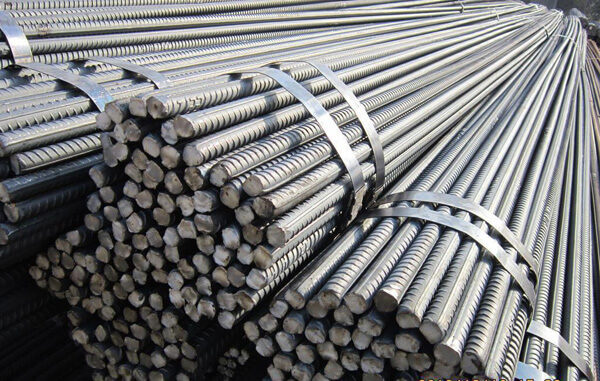
Rebar, also known as carbon steel or mild steel reinforcement bar, is manufactured with the addition of carbon to the extent of 0.05% to 0.25% to iron and serves as the framework of a structure. Deformed bars have ridges or lugs on their surface to increase grip and bond well with concrete, reducing the chance of slippage.
Reinforced Concrete structures are built all over the globe and have to withstand varying degrees of loads and environmental conditions. To neutralize the impact of elements and ensure that structures can last to serve their intended use, rebar is available in various sizes, grades, and material compositions.
Historical significance of reinforcement and evolution in construction
The use of metal to fortify buildings is not a new idea. On the contrary, it is deeply rooted in history The Romans used iron bars to strengthen their famous arches.
In 14th-century France, the Chateau de Vincennes consumed a staggering 2,500 meters of rebar to see the light of the day.
Russian industrialist Akinfiy Demidov, later in the 18th century, used high-quality cast iron (remarkably corrosion-free even today) to erect the Leaning Tower of Nevyansk.
However, it was not until the middle of the 19th century that the use of rebar with concrete became the norm giving rise to the term reinforced concrete.
Contributions from both sides of the Atlantic in the in1850s facilitated the widespread use of reinforced concrete; most notable amongst them were Joseph-Louis Lambot of France and Thaddeus Hyatt of the United States,
Contents
Rebar in Concrete Construction
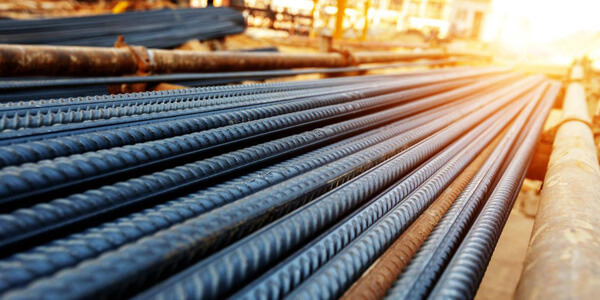
Concrete is a highly adaptable building material as it can be poured in liquid form into formwork of any shape and size, making it ideal for casting structural members like slabs, beams, and slabs and architectural features.
Concrete’s Strengths and Weaknesses
Plain concrete fares very well against compressive stress and is highly durable. Concrete’s fire resistance is sterling as it is non-combustible and helps buildings stay firm against fire over an extended period making it a logical option for buildings where fire safety is of paramount importance,
As concrete ingredients are relatively inexpensive and readily available, construction cost is reduced considerably
On the flip side, the intrinsic weakness of concrete is low tensile strength. It also tends to shrink as water evaporates causing it to crack before any weight is placed.
Rebar in enhancing tensile strength
Concrete is brittle without reinforcement and tends to fail without giving any warning signs. However, the addition of rebar turns it into a ductile heterogeneous mixture in which the individual components work in tandem to form a formidable building material. Reinforced concrete can withstand compressive as well as tensile stresses.
Composite nature of Reinforced Concrete
Combining concrete and rebar produces a composite material that can withstand compressive as well as tensile stresses.
The failure mode of reinforced concrete is ductile as concrete counters compressive stress and rebar withstands tensile stress making it useful to erect structures that are safe for the inhabitants
Types of Rebar and Their Applications

External factors ranging from environmental perils and intended use of the structure dictate the choice of appropriate rebar.
Surmounting these challenges has necessitated the development of a range of rebar variations, each tailored to excel in specific conditions:
European Rebar
Due to the blending of manganese, European rebar is low-cost, more accessible to bending, and can be adapted for crafting intricate shapes.
While it offers good bendability, this trait limits its use in earthquake-prone areas or applications where structural integrity relies heavily on reinforcement.
Carbon Steel Rebar
Carbon steel rebar is a conventional building material, the most prevalent variant because it is cost-effective and readily available.
Carbon steel rebar can be easily cut, bent, and shaped on-site, allowing for adaptation to various structural needs.
The surface texture of carbon steel rebar creates a firm mechanical bond with concrete, ensuring effective reinforcement.
,
Epoxy Coated Rebar
A thin yet durable epoxy film of metal oxides is applied over carbon steel rebar, providing impregnable resistance against corrosion.
Placing epoxy-coated rebars in bridges and marine structures in contact with salt water significantly reduces the risk of deterioration.
Galvanized Rebar
The galvanizing process fuses the zinc coating with the steel rebar and the protective layer remains intact even when exposed to corroision inducing environments.
Gavanised rebar is extensively used in water front structures eliminating the need for maintenance
Glass Fibre Reinforced Polymer (GFRP)
GFRP rebar is produced from polymeric resin-based synthetic reinforced with glass fibers.it weighs a quarter of carbon steel and possesses three times the tensile strength
Deicing salt or salt water cannot react with GFRP rebar as it contains synthetic resin which makes it impenetrable against corrosion.
Stainless Steel Rebar
The addition of chromium in the range of 10.5% or more is instrumental in transforming carbon steel to stainless steel.
Chromium forms a passive coating that shields stainless steel against corrosion.Its initial cost is higher as compared to carbon steel but serves well in marine structures and bridges.
Its remarkable endurance reduces the need for maintenance, making it far more economical over time.
Production and Manufacturing of Rebar
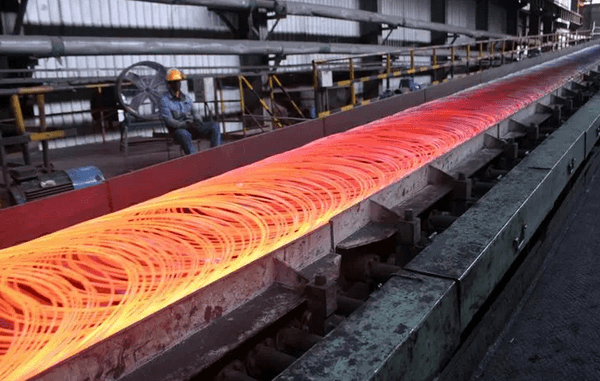
Produced under strictly regulated conditions, rebar is hardened by heat treatment after hot rolling. Rebar gets its form by drawing the heated liquid steel through little circular pores.
Once the steel is precisely shaped, the manufacturers add twists and grooves to ensure it firmly bonds with the concrete.
Recycled Materials and Eco- Friendly Production of Rebar
As environmental regulations worldwide tighten and production techniques move toward environmentally friendly ones, sustainability is at the forefront of steel rebar production.
Using recycled steel scrap is a significant component of an environment-friendly shift in rebar production. Manufacturers are switching from virgin iron ore and the energy-intensive extraction procedure to easily accessible scrap steel, reducing the carbon footprint.
Not only are the base components being refined in rebar manufacturing, but electric arc furnaces (EAFs) are also replacing conventional techniques for several producers in melting steel.
Electric arc furnaces are an environmentally friendly option as compared to furnaces that use fuel combustion models because a fair share of electricity is produced from renewable sources.
The Process from Billet to Finished Rebar
A rebar rolling mill produces rebar from basic materials like steel billet or scrap iron. The steel is heated to a high temperature and then rolled under pressure through rollers to incrementally reduce the diameter and increase the length of the rebar.
Depending on the client’s demands or the specifications of the building project, the mill can be set up to create rebars in various sizes and shapes.
Quality Control and Industry Standards
As part of quality assurance testing, tensile strength is determined along with the measurement of elongation of rebar during the test.
Tensile testing ensures that rebar can withstand the loads it will be subjected to in a structure without failing.
Determination of elongation of the rebar/ductility gives a measure of its ability to deform without splitting. Higher ductility in rebar is preferred since it lowers the possibility of disastrous collapse by enabling the material to soak up and diffuse the intensity of tremors during occurrences like earthquakes.
Regular tensile strength testing guarantees consistent quality in rebar production and ensures strict compliance with building codes and standards.
Well established industry benchmarks for rebar testing include:
- ASTM A996/A996M-16(US) outlines specific rebar tensile and bend testing requirements.
- ISO15630-1:2019(Global) governs procedures for testing the mechanical attributes of steel rebars.
Rebar testing can follow JIS G 3112 (Japanese Industrial Standard) or BS 4449 (British Standard), depending on the region and specific project requirements.
Choosing the Right Rebar for Your Project
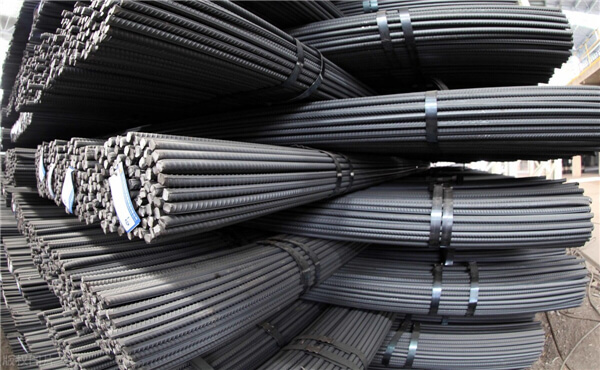
The choice of rebar depends on several factors including, but not limited to, the project’s purpose and environmental conditions such as seismic activity in the region.
Factors Influencing the Choice of Rebar Type
Selecting the appropriate type of rebar involves numerous essential considerations:
- Structural Demands: Expected load on the structure and soil-bearing capacity (weaker soil might sometimes favor GFRP rebar).
- Environmental Conditions: Seismic activity (stainless steel rebar preferred), corrosion resistance (epoxy-coated steel, galvanized steel for harsh environments).
- Project Considerations: Size, complexity, fire resistance (carbon steel rebar for residential buildings ), and sustainability (GFRP can be a greener option)
Building codes, availability, cost, and utility must be factored in to select the appropriate variant of rebar. Seeking advice from a licensed structural engineer or construction expert will stand you in good stead while identifying the particular needs of your project.
Size and Grade Considerations
The load and stress the structure will be subjected to be the overriding factors in determining rebar size and grade.
Rebar size, specified by a number followed by the matching diameter expressed in eights of an inch, such as #3 is ⅜ inch, is determined by several considerations, including structural specifications, building codes, and spacing limitations. The higher load-bearing capacity of larger-diameter rebars qualifies them for heavy-duty applications.
Rebar grades indicate what the lowest yield strength of the material is. The most typically used grades are 40 through 60 and 75. A higher grade number characterizes higher yield strength.
The structural needs and expected loads the project will support determine the grade of rebar to use. Rebars of Grade 40, for example, have a yield strength of 40 ksi, while those of Grade 60 and Grade 75 stand at 60 ksi and 75 ksi, respectively.
Grade 40 rebars possess lower yield strength than higher grades and are well suited for residential buildings as expected loads are lighter as compared to industrial complexes.
Commercial buildings, bridges, and roads grappling with moderate to intense loads are reinforced with Grade 60 rebar.
Structures sustaining heavy loads, such as skyscrapers and regions where seismic intensity is high, Grade 70 rebar is used to blunt the impact of earthquakes.
Placement and Spacing of Rebar for Structural Integrity
Structural integrity depends on the rebar’s location and spacing within the concrete.
Rebar isn’t just thrown into concrete.
Placed in a grid pattern throughout the structural elements (foundations, beams, slabs), the number of rebars must satisfy the condition of minimum steel content calculated as the percentage of the cross-sectional area of the structural members.
The minimum concrete cover over the rebar, specified by building regulations, also governs the placement of the rebar. This cover ensures moisture and other environmental conditions cannot corrode the rebar.
Another factor influencing the concrete’s overall strength is the rebar’s spacing. Closer spacing offers additional support but can pose challenges during the erection and installation of rebar. Striking the right balance between strength and ease of construction activities is the key to successfully implementing the project.
Additionally affecting spacing is the diameter of the rebar selected. Larger diameter rebars naturally require a little more space than smaller diameter bars to fulfil the minimal code requirements,
Installation Techniques and Best Practices
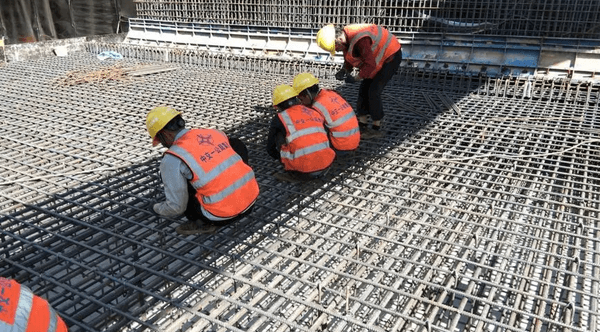
A crucial step in concrete construction, rebar installation provides the structure’s strength and stability by setting up its concealed skeleton.
The rebar must be developed and sized by cutting and bending it so that the steel mesh can satisfy its design criteria.
Accurate Placement of Rebar in Various Structures
Tying wires bind the rebar at intersections to ensure the steel grid or cage remains firm during a concrete pour. Purpose-built tools are helpful in consistently and efficiently tying the reinforcing bars.
Additionally, concrete or plastic spacers are used to keep the rebars in their proper places to maintain cover between the concrete’s exposed surface and the rebar. Insufficient cover exposes the rebar to elements, and corrosion sets in, leading to concrete spalling.
While less common, welding can permanently join rebar elements in specific applications.
Furthermore, where rebar lengths require extension, proper overlap lengths are essential to maintain structural integrity.
Best practices for laying steel include inspecting the installed rebar web before pouring concrete. The rebar must be free from dirt, oil, or loose rust to ensure proper bonding with the concrete.
Bending and Cutting Techniques for Precise Fitting
The rebar is available in straight lengths and may need to be curled or curved as per the engineering drawings. Specifically, designed bending machines or hand tools are employed to meet the requirements of the design protocols.
Cutting
Power shears work well for clean, rapid cuts with minimal waste. While abrasive saws are more flexible with angled cuts, operating them generates heat and dust, so safety precautions should be observed. Handy cutters are a simple fix for small-scale jobs or cramped spaces.
Bending
Rebar bending machines ensure exact angles with numerous size options for varied rebar diameters. Though precise angles can be difficult, hand tools (Stirrups) provide some bending flexibility for minor works or on-site modifications. Last but not least, mandrel bending allows the forming of specific shapes by wrapping rebar around a metal rod.
However, the Bar Bending Schedule (BBS) is the definitive manual. This blueprint specifies the precise lengths and bends needed for each component to ensure every rebar element fits flawlessly in the finished construction.
The Impact of Placement on Load Bearing Capacity
The engineering design of a structural concrete member specifies the cross-sectional area of the steel per foot of that component length. To guarantee consistent strength throughout, every foot of the member must contain the same quantity of steel as the foot adjacent to it.
Suppose the rebar is placed wider than specified in the bar bending schedule. In that case, this translates into a reduction in the area of steel and severely compromises the reliability of the structure.
You might not realize it, but the strength of concrete structures relies heavily on where the steel bars are placed. Engineers carefully design where these bars go to handle the load the building will endure.
Advanced Rebar Technologies and Innovations
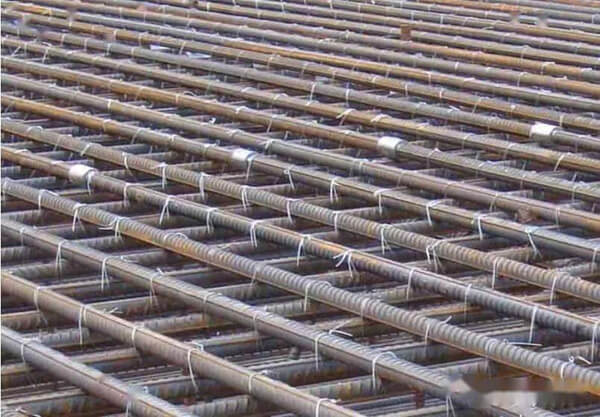
Revolutionising the industry is rebar innovation. While 3D printing provides on-site customization and less waste, new metals and coatings are strengthening and toughening rebar.
Developments In Rebar Materials
Conventional steel rebar is being replaced with carbon fiber-reinforced polymer (CFRP) rebar. Made of a resin and carbon fiber combination, CFRP rebar has a considerable weight advantage. Building projects can gain from lighter building structures in several ways. First, it lessens the foundation’s weight, enabling thinner slabs or smaller footings. Second, the smaller weight of CFRP rebar facilitates its transportation and handling on site, which speeds up building and reduces labor expenses.
On top of that, carbon fiber is chemically stable and corrosion-resistant. In harsh environments, CFRP rebar-reinforced structures will last longer than steel rebar-reinforced structures.
The Future of Rebar
A rising star in concrete reinforcing is basalt fiber reinforced polymer (BFRP) rebar. Made of volcanic rock fibers encased in resin, BFRP provides a remarkable corrosion-resistant lighter substitute for steel, allowing for easier handling and appropriateness for abrasive settings like coastal regions.
Although BFRP is now less widely available and more expensive than steel, its high tensile strength, radio wave transparency, and sustainability potential make it a promising choice for the future of construction; as the technology develops, building codes will probably adapt.
Common Rebar Configurations and Patterns
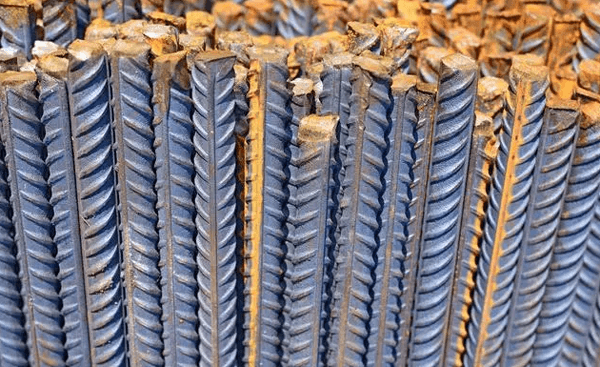
Appropriate rebar configurations and patterns ensure concrete structures’ strength, durability, and safety. They are contingent upon the type of structural element (beam, column, and slab) and the stresses a particular member encounters.
Grid Pattern for Multi-Dimensional Force Resistance
A vital component of concrete structure reinforcement is the rebar grid layout. The grid pattern distributes the tensile forces across the entire concrete element. Think of it like spreading the weight of a heavy object over a large surface – each bar carries a share of the load, preventing any single point from overloading and cracking.
Distributing stress and controlling cracks safeguards the strength, durability, and, ultimately, the safety of concrete structures.
Best Practices for Layout of Rebar In Complex Structures
The rebar placement necessitates careful planning and execution to perform well in complex geometries, unlike simpler systems. Considerable loads and stresses are intended to be handled by complex constructions. Weak spots, stress concentrations, and eventually cracking or even collapse of the building might result from incorrect rebar placement.
Ultimately, the primary concern is the safety of occupants and users of the building. Following best practices helps mitigate these risks and ensures the building meets the highest safety standards.
The rebar arrangement must correspond thoroughly with the Bar Bending Schedule (BBS) and conform to local building codes and regulations.
The spacing of rebar must be maintained as specified in the engineering drawings, as any deviation might compromise the structure’s safety.
Where the dimensions of the structural member necessitate continuity of the rebar, lap length specified in building regulations and criteria must be adhered to.
Regulatory Standards and Building Codes
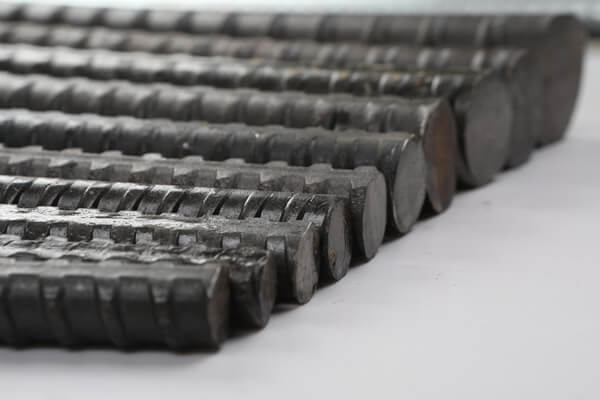
Standards are established by non-governmental organisations (ASTM, ISO) and provide detailed technical specifications for materials, products, and construction procedures.
.Building codes, framed by governments, establish minimum requirements for safe and functional buildings, considering factors like structural integrity, fire safety, accessibility, and energy efficiency.
ASTM, Eurocode, and Other International Standards
Just as the North Star provides a fixed point of reference for sailors, international/regional standards are a yardstick for the construction industry. The premier organizations setting benchmarks for the infrastructure sector are as follows:
ASTM (American Society for Testing and Materials) is a globally recognized organisation developing voluntary consensus standards for various materials, products, systems, and services. ASTM standards provide a comprehensive touchstone for the construction industry, from steel rebar specifications (ASTM A615) to fire resistance testing methods (ASTM E119).
Eurocodes (EC) cover divergent aspects like the design of concrete structures (EC2), steel structures (EC3), and earthquake resistance (EC8). While not mandatory in every European country, Eurocodes are a gold standard for achieving structural reliability.
ISO is a central hub of national standards bodies working towards international standardization agreements.
ISO15630-1:2019(Global) stipulates methods for testing the mechanical properties of steel rebars.
Safety and Environmental Regulations
The World Steel Association advocates sustainable steel production. It actively contributes to global initiatives to minimize the environmental brunt of steel production and ensure a future where steel production meets current needs without jeopardizing future generations.
The sector acknowledges its responsibility in building an ecologically sound society. It participates actively in initiatives on social well-being, resource efficiency, and environmental effects.
The steel sector monitors and announces its performance in multiple domains every year. Amongst these are social contributions, environmental policies, and economic measures. The reporting is consistent with the United Nations SDGs, or Sustainable Development Goals.
Members of the World Steel Association have painstakingly gathered data on eight sustainability indicators since 2004. The number of businesses contributing to this endeavor stood at 94 in 2023. The information guides choices and facilitates monitoring of developments.
The sector releases figures on energy intensity and worldwide CO2 emissions, including steel production from Electric Arc Furnaces (EAFs), a key component of sustainability.
Rebar In Specialised Construction
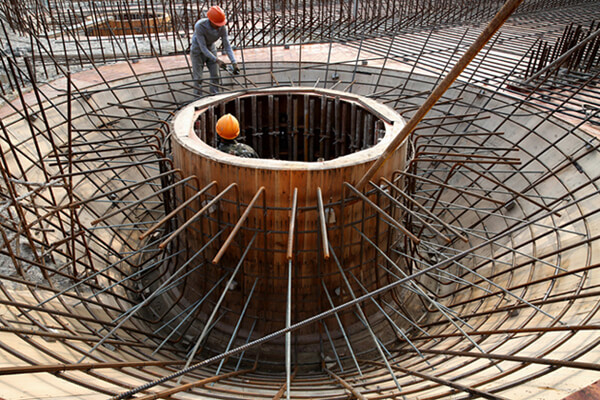
Rebar is frequently combined with other materials in specialized building projects to offer extra strength, durability, and corrosion resistance, including fibre-reinforced polymers (FRP). Local building regulations and the project’s needs may determine the type and grade of rebar utilized.
Use In Seismic, Marine, And Corrosive Environments
ASTM A706-compliant seismic-grade steel rebar plays a crucial role in securing the safety and resilience of structures during earthquakes.
Strength, ductility, and weldability combined in ASTM A706, seismic grade steel, improve reinforced concrete structures’ earthquake performance, allowing engineers to design safer buildings and infrastructure.
Seawater corrosion takes out standard steel rebar under harsh maritime environments. Engineers opt for specially designed corrosion-resistant rebar selections to erect offshore oil and gas platforms, seawalls, jetties, and piers to mitigate the effects of decay arising out of corrosion.
These include galvanized, epoxy-coated, GFRP, and even stainless steel rebar, all offering enhanced resistance to the weakening effects of saltwater exposure, ensuring the security and longevity of the structures.
In challenging environments where chemical exposure is a matter of concern, such as chemical plants and industrial buildings, engineers substitute standard rebar with reinforcement coated with zinc, epoxy, polyurethane, or ceramic.
Advanced solutions like fiber-reinforced polymer (FRP) rebars and even stainless steel rebars also enter the picture to combat corrosive materials and ensure the durability and performance of rebars in harsh environments.
Rebar Applications in Landmark Projects
Zinc-coated steel bonds historic wonders like the Brooklyn Bridge in New York City with contemporary marvels like the Ogdensburg-Prescott Bridge across the St. Lawrence River between New York and Ontario. Prized for its remarkable corrosion resistance, this strong material has endured in famous projects and is still a reliable option to guarantee the lifespan of most spectacular bridges.
At the entry to Jeddah, Saudi Araba is a magnificent landmark: a 120-meter-high gateway. Two elegantly curved towers on either side of the road are joined close to the top. Glass fiber-reinforced polymer (GFRP) is the secret ingredient to this fantastic achievement.
This remarkably durable and eco-friendly material keeps the weight of the towers down, significantly reducing the amount of material needed for the foundation and lowering construction costs.
GFRP offers a significant advantage over traditional steel: minimal maintenance, less traffic flow disruption, and a smooth journey for visitors entering Jeddah.
Maintenance, Inspection, and Longevity
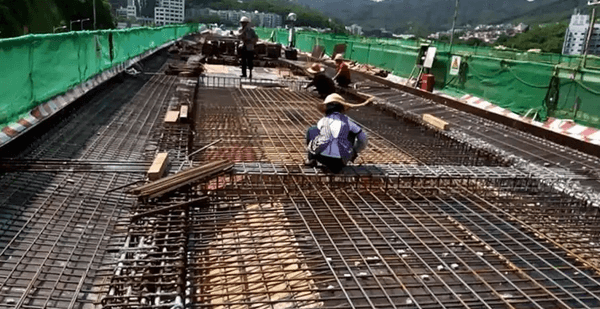
The key to any well-crafted rebar inspection plan is initiative. It enables engineers to take preventative measures and assure the longevity of the construction by not only identifying problems early but also forecasting future challenges that lie ahead.
Signs of Rebar Corrosion and Damage
Cracks, spalling, and rust stains on the concrete surface should be the main focus of routine visual examinations since these can indicate possible rebar corrosion.
A non-destructive procedure known as a half-cell potential (HCP) test gauges the electrical voltage between the rebar and a reference electrode. Higher voltage readings imply a greater chance of rebar deterioration beneath the concrete surface.
Ensuring the Longevity of Reinforced Structures
Reinforced concrete structures are robust and durable but require ongoing care to ensure longevity. Here are some fundamental courses of action for achieving this objective:
- 1. Quality Control: Ensure proper mixing, placing, and curing of concrete.
:2. Proper Concrete Cover: Maintain adequate concrete cover over rebar to prevent corrosion.
- Coatings and Linings: Apply protective coatings or linings to rebar and concrete surfaces.
- Cathodic Protection: Apply an electric current to drive corrosion reactions in the opposite direction.
- Galvanizing or Epoxy Coating: Protect rebar with zinc or epoxy coatings.
- Regular Inspection and Maintenance: Monitor for signs of corrosion or damage and perform repairs promptly.
- Waterproofing and Drainage: Prevent water ingress and ensure proper drainage.
- Rebar Selection: Choose a rebar with appropriate corrosion resistance for the environment.
- Concrete Repair and Restoration: Address cracks and damage with proper repair techniques.
- 10. Monitoring and Testing: Regularly test and monitor rebar and concrete conditions.
- Protection from Chlorides and Sulfates: Prevent exposure to corrosive substances.
- Design for Durability: Consider environmental conditions and structural demands in design.
DIY Tips and Guidance for Home Projects
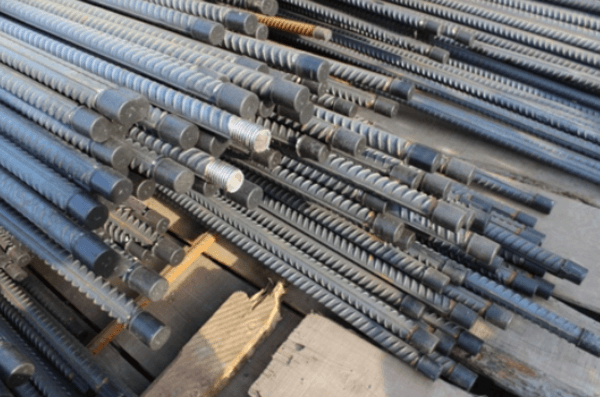
Even though complex reinforced concrete constructions are better left to experts, you can add rebar to specific small-scale do-it-yourself projects at home for extra strength. But you have to handle these initiatives carefully and give safety a priority.
Small Scale Projects and Home Renovations
Here are some DIY tips for minor modifications at home with rebar:
- Simple Shelving: Use rebar to create a rustic shelving unit for your home or garage.
- Plant Stands: Bend rebar into unique plant stands or trellises for your garden or indoor plants.
- Decorative Accents: Use rebar to create decorative accents like candle holders, coat racks, or wall art.
- Outdoor Furniture: Create outdoor furniture like benches, tables, or chaeta.
- Garden Edging: Use rebar to create durable and rustic garden edging for your flower beds.
- Pet Enclosures: Build pet enclosures, like dog runs or chicken coops, using rebar and chicken wire.
- Fencing: Use rebar as a reinforcing material for DIY fencing projects.
- Concrete Planters: Create concrete planters using rebar as a reinforcing material.
- Fire Pit: Build a fire pit using rebar and concrete for a cozy outdoor gathering spot.
- 10. DIY Repair: Use rebar to repair damaged concrete or masonry structures around your home.
When and How to Use Alternatives
Welded wire fabric (WWF) is a versatile material often used as an alternative to traditional rebar in specific concrete applications. Here’s when WWF might be a good choice for your project:
Slabs: Driveways, walkways, patios, and pool decks often utilize WWF to prevent cracking and improve concrete performance under load.
Shotcrete applications: Reinforcing shotcrete (spray able concrete) on slopes, walls, or pools is an everyday use case for WWF due to its ease of handling and flexibility in conforming to uneven surfaces.
Thin concrete sections: Floor slabs, pre-cast panels, or architectural features with thinner concrete sections can benefit from WWF’s ability to provide uniform reinforcement.
Conclusions
Like an internal framework inside the concrete, rebar provides the material with the durability and strength required to support dams, bridges, and skyscrapers. Concrete would split and fail under strain without rebar.
Moreover, as structures have grown in complexity due to rising population coupled with the push for a greener planet gaining momentum limiting the use of materials contributing to environmental degradation, rebar has evolved as well.
Technological advances have delivered cost-effective alternative reinforcement solutions, paving the way for safe and environmentally friendly infrastructure.
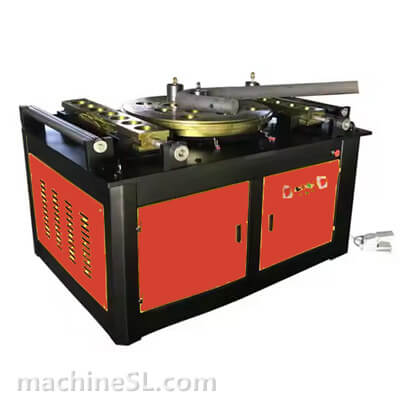
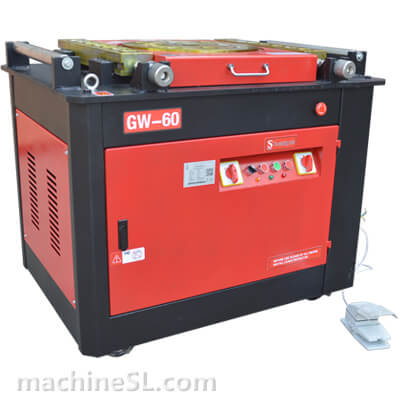
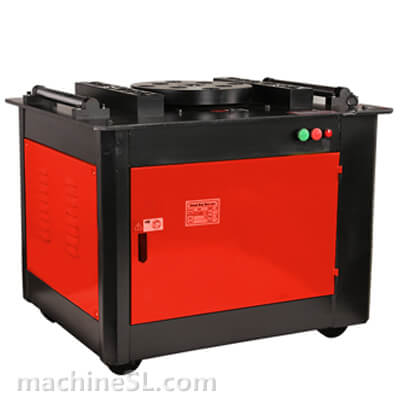
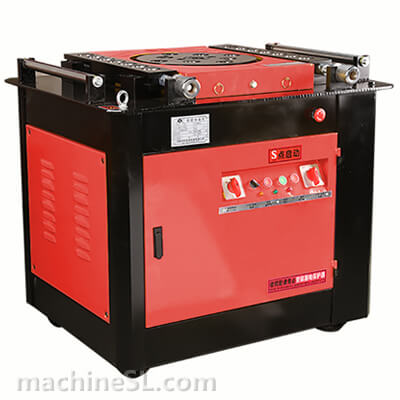
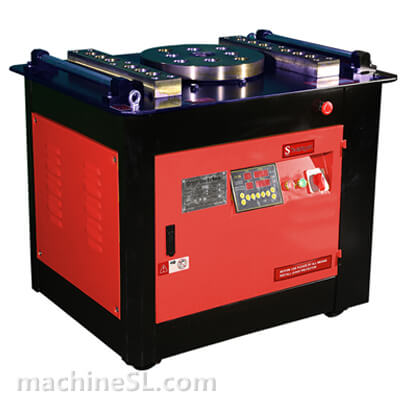
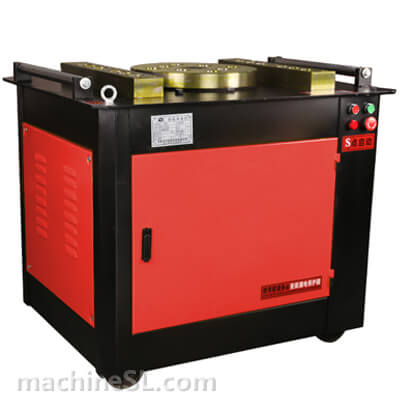
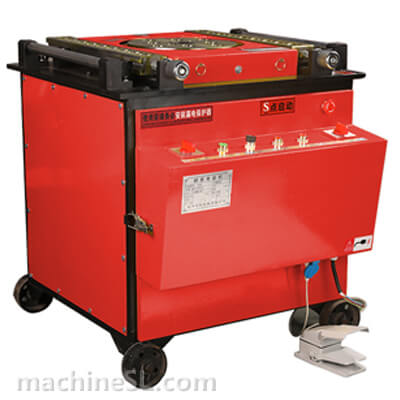
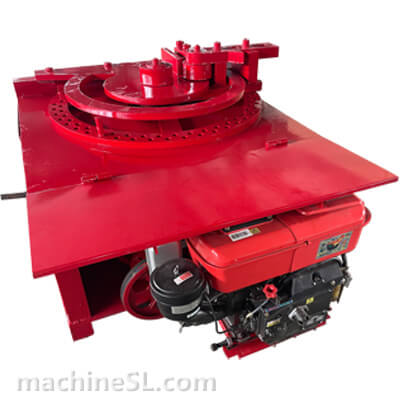
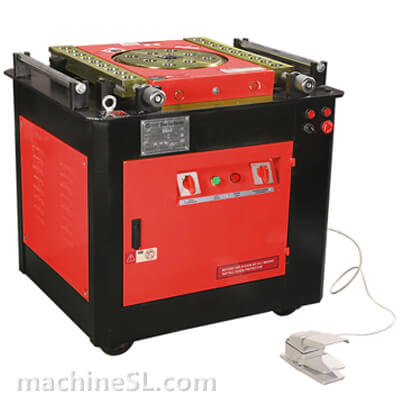
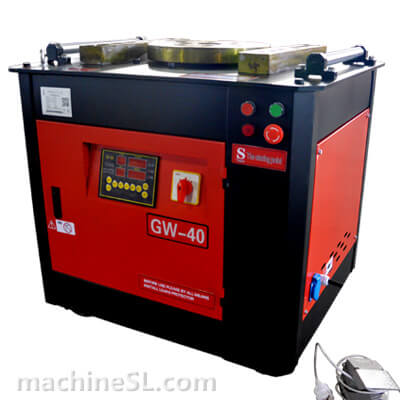
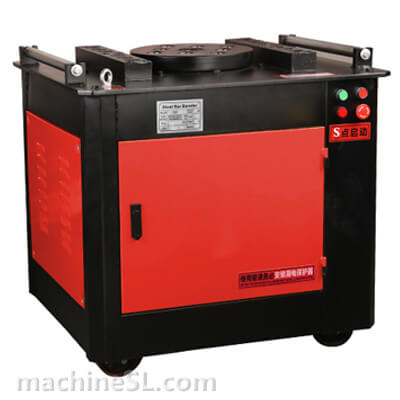
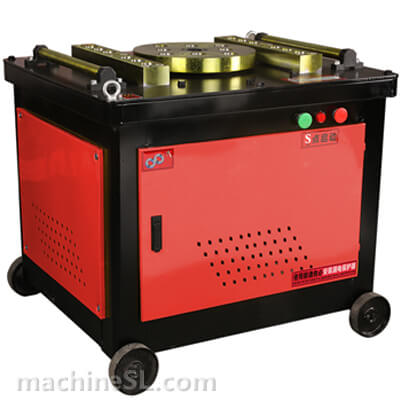
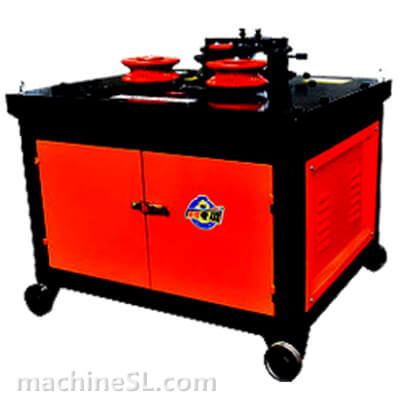
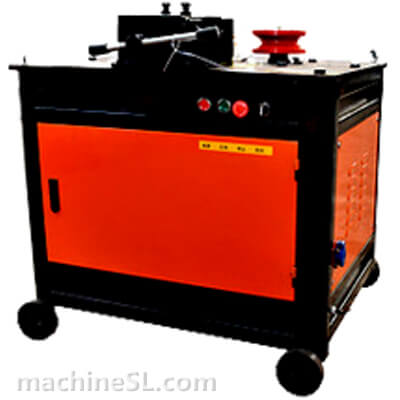
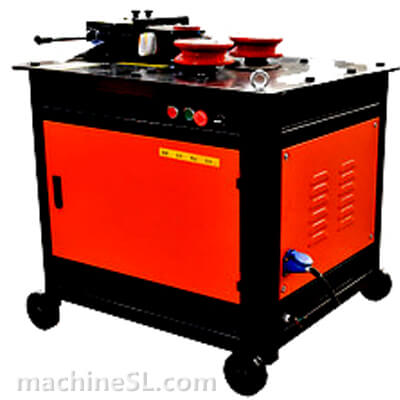
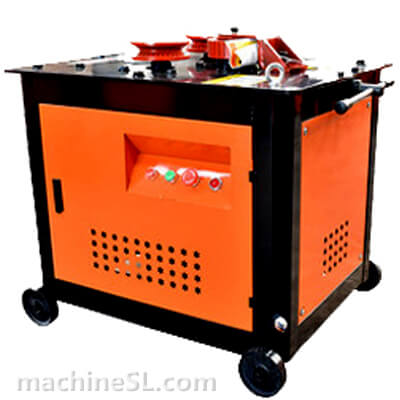
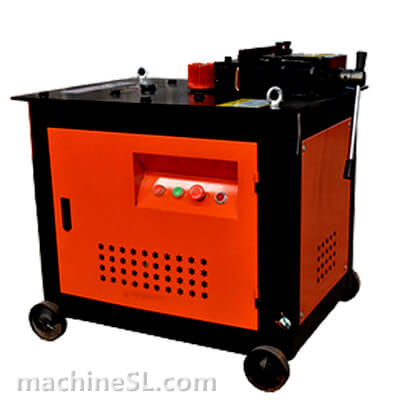
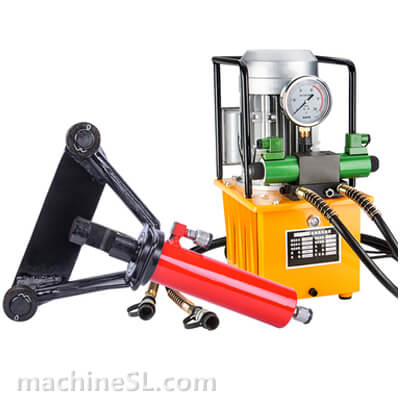
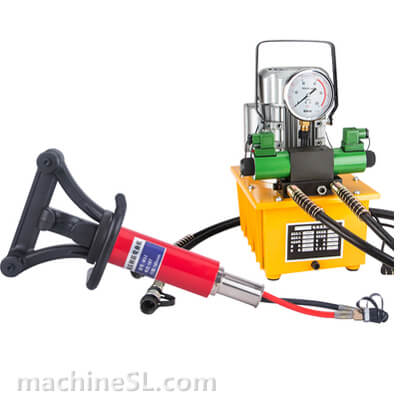
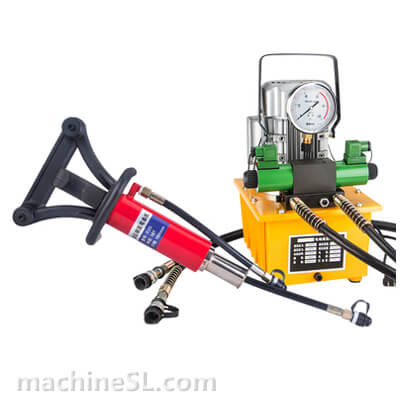
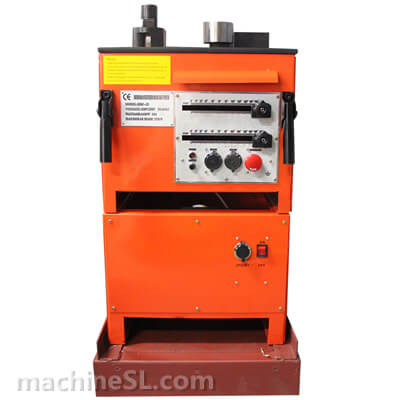
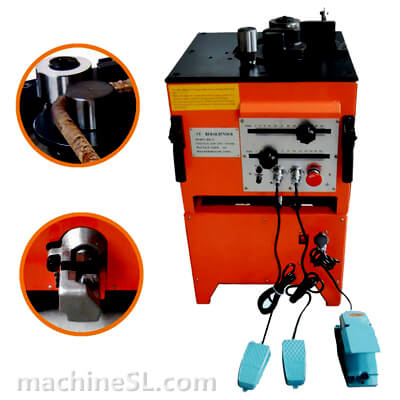
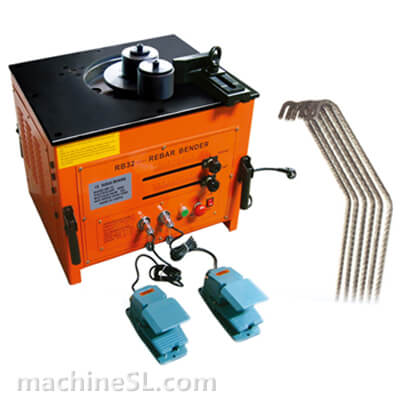
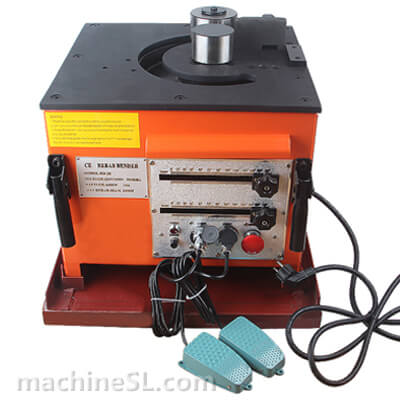
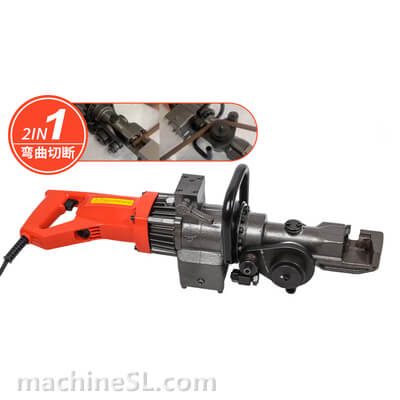
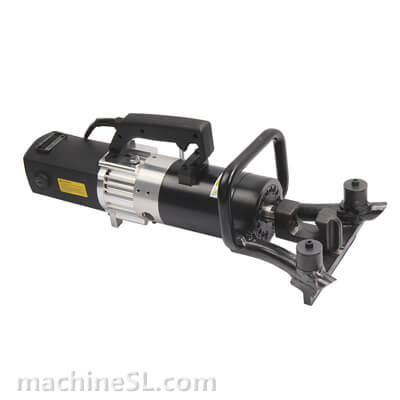
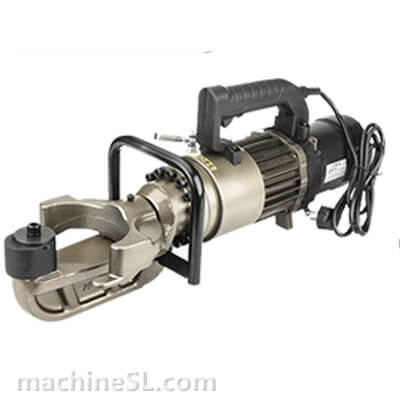
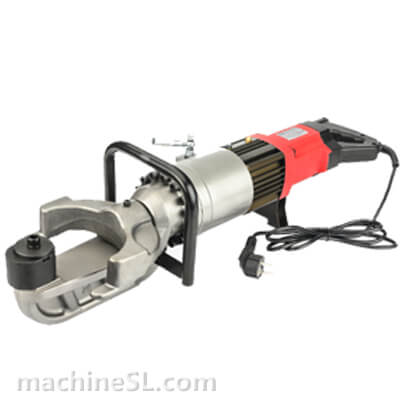
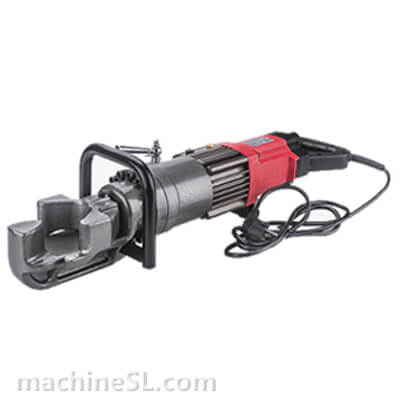
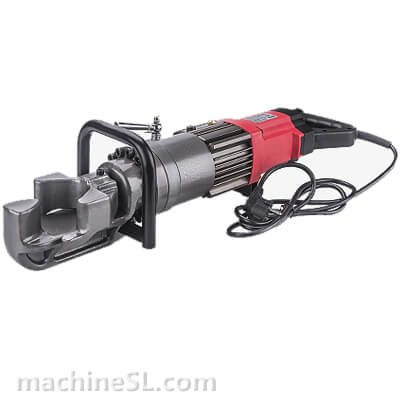
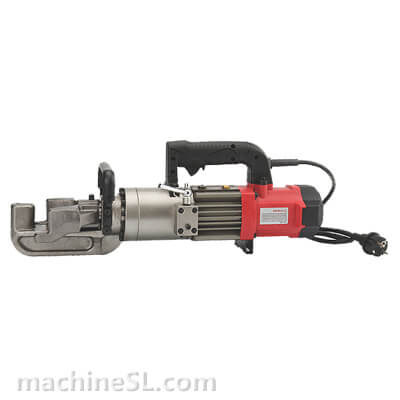
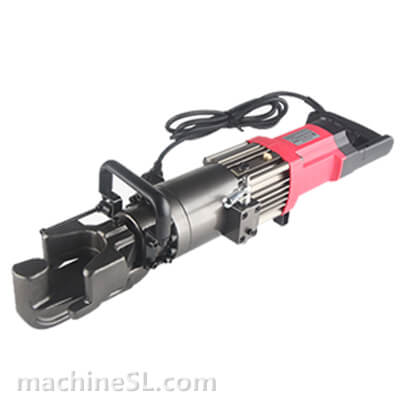



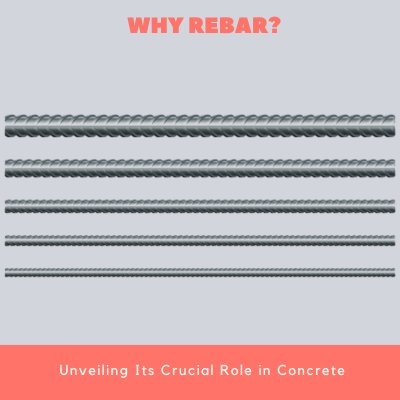
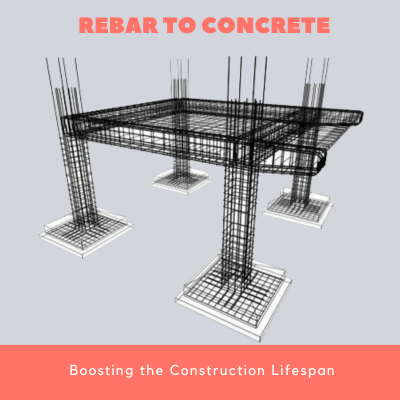
Leave A Comment